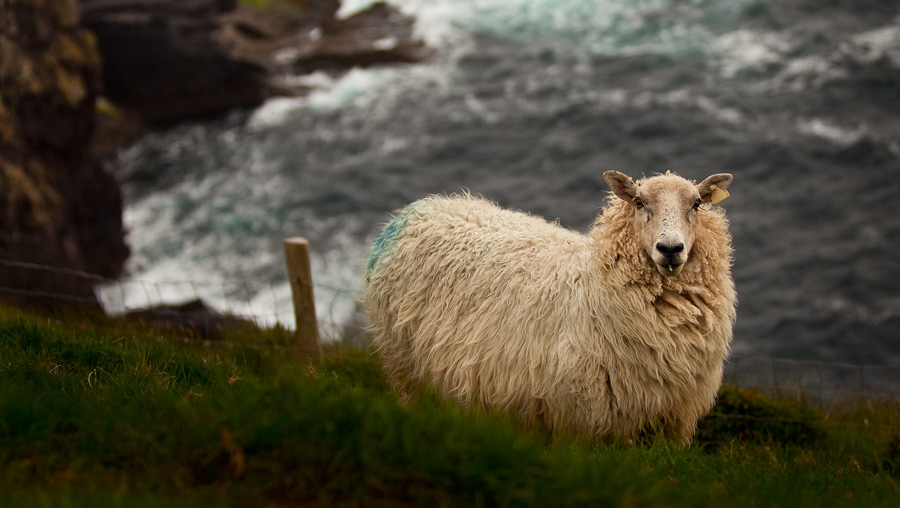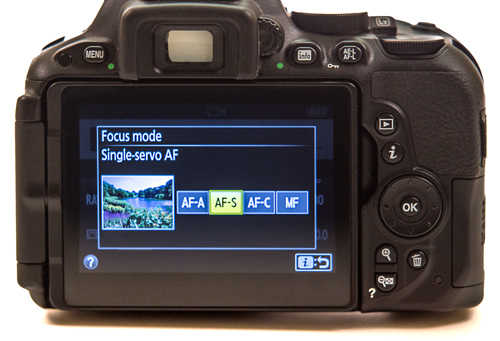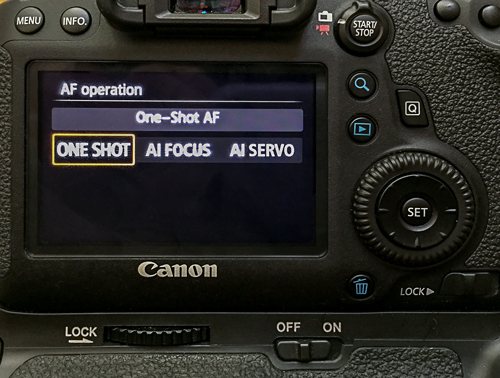
What kind of name is AI Servo? When you look at the autofocus modes on your camera – if you use Canon – that will be one of the modes. It is a ridiculous name.
I’m complaining about this name for a reason. And that is that understanding and choosing an auto-focus mode could be really easy if the camera manufacturers didn’t use such obtuse names. Essentially, the whole subject breaks down into a decision over whether the camera should
- (a) focus on one stationary point and not change the focus, or
- (b) attempt to track a moving subject and shift the focus.
That’s it.
But rather than use actual useful names (something like “stationary” and “tracking”), the camera manufacturers make this subject needlessly difficult by using names like AI Servo. And I’m not just picking on Canon either – Nikon is no better. Nikon’s autofocus modes are called “AF-S” and “AF-C.” How helpful is that? Not very.
So let’s demystify this subject a little bit. First, we will simplify the names. After that I’ll talk a little bit further about how the modes work and when you might want to use them.
Naming the AutoFocus Modes
As I mentioned already, the only focus modes you will ever use are either (a) stationary, or (b) tracking. I’ll have more about how these work in a second. But for now, this chart should explain the autofocus modes a little bit, so at least you will know what the autofocus mode on your camera is doing:

(The Nikon nomenclature actually starts to make a little bit of sense once you know that the “S” stands for “Single” and the “C” stands for “Continuous.”)
Keep this chart in mind as we talk about the two modes here. If you see other autofocus modes on your camera, go ahead and ignore them. Seriously, the only two modes you will ever need to use are stationary and tracking (or whatever they are called on your camera).
Stationary Focus (“One Shot” in the Canon world, “AF-S” in the Nikon world)
The first and most common autofocus mode is what I call Stationary focus, and what Canon calls One Shot and Nikon calls AF-S. This focus mode is simple. The camera simply focuses on one thing and, once you set it, the focus does not move. It is set and that’s it. You set your focus on something, and the focus remains set until you take the picture. You can wave your camera all over the place and the focus will not change (unless you reset it).
This mode is obviously great where your subject is not moving. In that case, you just focus on what you want and take the picture. In addition, you will probably find this mode useful even when you face a moving subject. You simply need to move quickly to set the focus and take the picture. You can also anticipate the point of focus and set your focus point for that location.

Tracking (“AI Servo” in the Canon World, “AF-C” in the Nikon World)
The only other autofocus mode that you should ever use is what I call Tracking mode, and what Canon calls AI Servo and Nikon calls AF-C. This is the focus mode that attempts to track a moving subject. Essentially when you set your focus (press the shutter button half-way down), your camera will attempt to identify the subject and then continuously shift focus to keep that subject in focus. It is also called “predictive” focusing because the camera is making guesses about what the subject will do as things change in the frame.
This auto-focus mode is obviously move where you have a moving subject. I personally do not like it, and almost never use it. It has been used with great success, however, by sports photographers who are obviously dealing with moving subjects, as well as wildlife photographers tracking moving animals with their cameras. If you shoot a lot of sports and wildlife, you might use this mode a lot. Otherwise, stick with Stationary (One Shot or AF-S).

Forget About the Other Modes
The camera manufacturers also try to trick up their cameras with other modes. These should all be ignored.
In particular, Canon includes a mode on its cameras called AI Focus. It is sort of a cross between stationary focus and tracking, which sounds promising, except that it doesn’t work very well. I have never been able to use it and, while I previously thought it was just me, I did some reading recently where most others have pronounced this mode to be useless. It should be avoided.
Nikon includes other modes on its cameras too. These should be ignored as well.
The AutoFocus Modes to Use
So which mode should you use?
Whenever you can, use the stationary auto-focus mode (One Shot on Canon and AF-S on Nikon). It just works the best and is the easiest to use. Even where your subject is moving a bit, you should be able to set the focus and take the picture quickly. Keep in mind that just because your subject is moving does not necessarily mean your focus is changing very much. For example, if you are on the sidelines of a sporting event and a player is sprinting down the field, they may be essentially staying the same distance from you such that your focus doesn’t change. Be sure to check that.
Where you are having difficulty focusing because of a moving subject, however, switch over to tracking auto-focus (AI Servo on Canon and AF-C on Nikon). So, for example, when you want to catch a bird in flight or something moving quickly, this will be a lifesaver. I think you will find these occasions few and far between though. The best practice is to keep it in stationary mode, and just switch over to tracking mode when the need arises.

Heaven forbid anything should be sensible – what would happen to the mystique and magic created by obscure terms which can be used by marketeers to highlight camera benefits which transcend the understanding of normal people; and photographers, thanks to their apparent understanding of this mumbo-jumbo, would not be accorded the elevated status they undoubtably deserve.
Ha! That’s awesome. I wish I had written that!
Jim – what’s really awesome is the time and effort you put into helping others – have no doubt, it is appreciated.
It is 100% my pleasure.